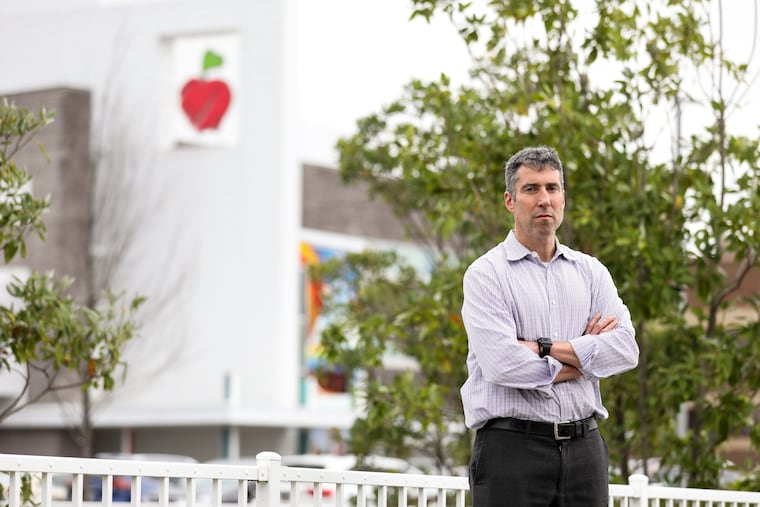Treating childhood obesity requires addressing neighborhood risks | Expert Opinion
New AAP guidelines call for earlier use of medication and surgical interventions for childhood obesity.

As I look at the electronic record of my patient, I see that this wonderful 6-year-old, whom I have known since birth, is now in the obese range.
I walk into the room and his mother greets me with the all-too-familiar refrain of a parent who has tried all that she could, in an environment that she didn’t build: “I know doc. What can I do?”
What can I do?
On Jan. 9, for the first time in 15 years, the American Academy of Pediatrics (AAP) updated its comprehensive guidelines on how doctors like me should evaluate and treat children and adolescents with obesity. The 100-page document responds to what many experts have called a childhood obesity epidemic.
About 19% of children and teens — 14.4 million children — experienced obesity in 2018, up from 5% of children and teens in 1963. A predictive model estimates that if these trends hold, by 2050, 57% of children 2 to 19 years will have obesity by age 35.
» READ MORE: New guidelines for treating childhood obesity prompt debate among Philly health experts
Obesity should be recognized as a chronic disease, like asthma and diabetes, and must be treated as such to prevent short- and long-term outcomes. We are moving toward a new costly trend that may paralyze the health care system in the near future by causing a wave of chronic health problems and premature death throughout our communities. Already, obesity costs the health care system $150 billion a year.
In the late 1990s, many of the complications of obesity were limited to adults or a small subset of teens. Now, our large pediatric practice in North Philadelphia is diagnosing the comorbidities of obesity on a daily basis.
In just the last few months I have treated:
A 14-year-old girl with “idiopathic intercranial hypertension,” where increased pressure on the brain from her obesity caused daily headaches and pressure on her optic nerves.
A 12-year-old boy whose excessive weight caused the head of his femur to slip off the bone. He needed hip surgery.
A 9-year-old, 177-pound boy whose weight was straining his liver and putting him at risk for future liver failure.
A depressed, suicidal teen who was teased because of his weight.
I am also co-managing several teens with type-2 diabetes, a condition often (but not always) associated with excess weight that has doubled in this age group in the last 15 years.
Some children at greater risk for obesity
In our large outpatient clinic of more than 20,000 pediatric patients, 93% are covered by Medicaid, the public health care program for low-income individuals and families. Almost half of our children have a diagnosis of overweight or obesity.
The AAP statement on childhood obesity prudently emphasizes that childhood obesity involves many factors and results from social and environmental as well as genetic factors. It also discusses how historical racism, crime, poverty and stress can alter the way we regulate our energy, putting children in communities with high rates of adversity at greater risk of developing obesity.
Many of the children we serve are stigmatized, blamed and bullied because of their weight — yet they have no control over these social factors that contributed to their obesity.
In the United States, wealth equals health, and when it comes to inequities in childhood and adult obesity, poverty is always the elephant in the room. Children living in poverty have 2.51 greater odds of being obese.
The new AAP guidelines highlight that we should treat obesity, like any other chronic medical condition, with evidenced-based interventions. These recommendations include motivational interviewing, intensive health behavior and lifestyle treatment.
Yet a troubling “sign of our times” guidance is to include pharmacotherapy for children as young as 12-years-old and metabolic and bariatric surgery for children with comorbidities, starting as young as 13 or 14 years old.
The AAP’s approach looks at the child’s health status, family system, community, and resources. But it is the cuts to social services, healthy food options, and investments in local communities that bear responsibility for the irreversible scalpel cuts that soon will come from bariatric surgery in children.
Community interventions for obesity
Public health 101 teaches that the most cost effective, equitable interventions start early in a child’s life, and support the entire family and community.
Those interventions could include:
More funding for obesity prevention programs, especially in the most vulnerable populations, that should include investments such as expanding nutrition interventions with WIC and SNAP, two programs funded by the government to provide nutritious food to qualifying families.
Increasing minimum wages and funding for paid maternal leave for families to be able to spend more time mindful cooking and eating.
Political recognition and investments in communities that have been historically marginalized to ensure more safe play spaces and healthier food options.
Improved reimbursements for hospitals that take care of majority Medicaid patients, such as St. Christopher’s Hospital for Children.
In Philadelphia, programs such as the Food Trust, which operates farmer’s markets throughout the city, and Get Healthy Philly, which collaborates to make healthier urban environments, are working diligently to address this epidemic. The Cap4Kids website, www.cap4kids.org/philadelphia, has a section devoted to obesity reduction resources.
Daniel R. Taylor is advocacy director at St. Christopher’s Hospital for Children.